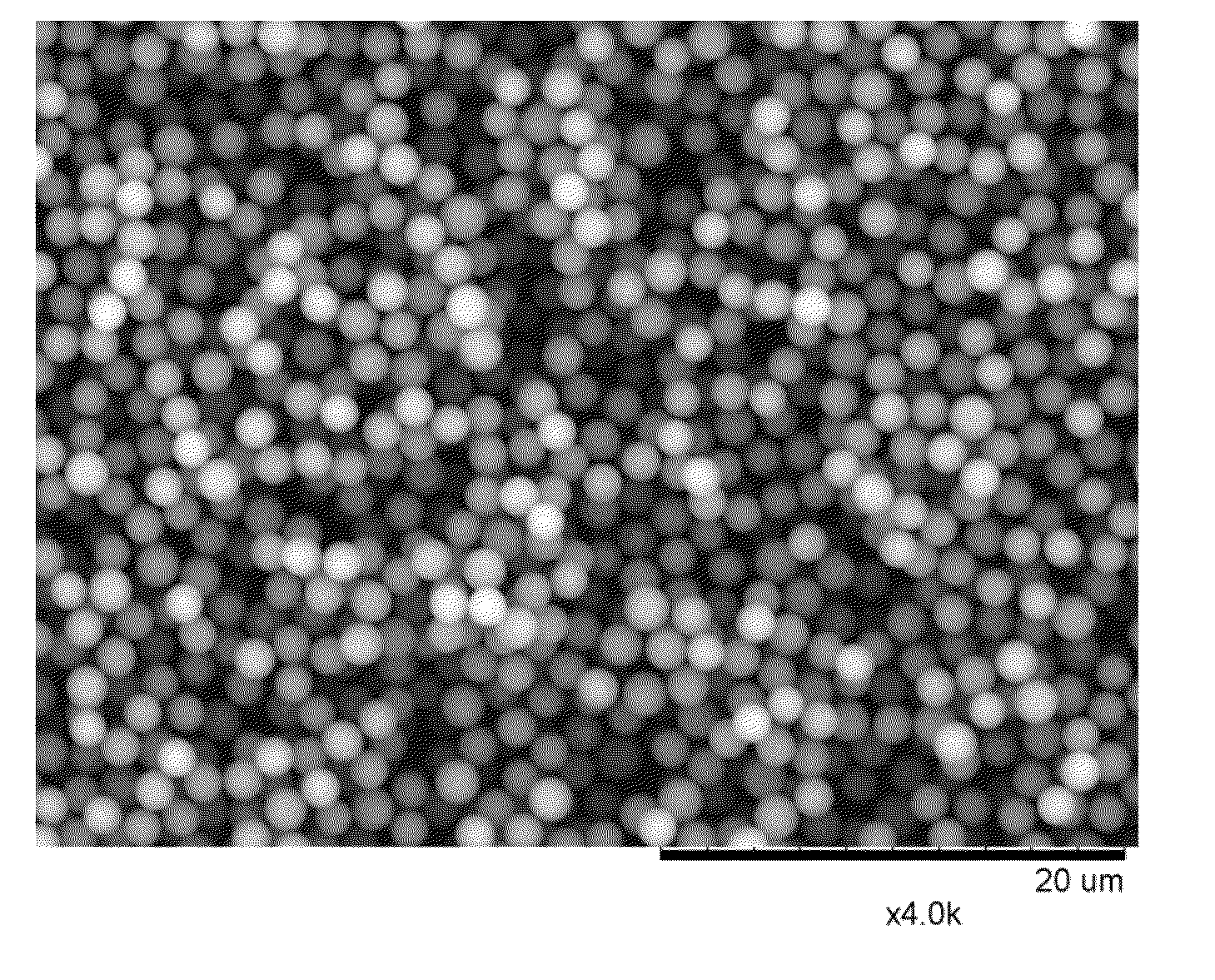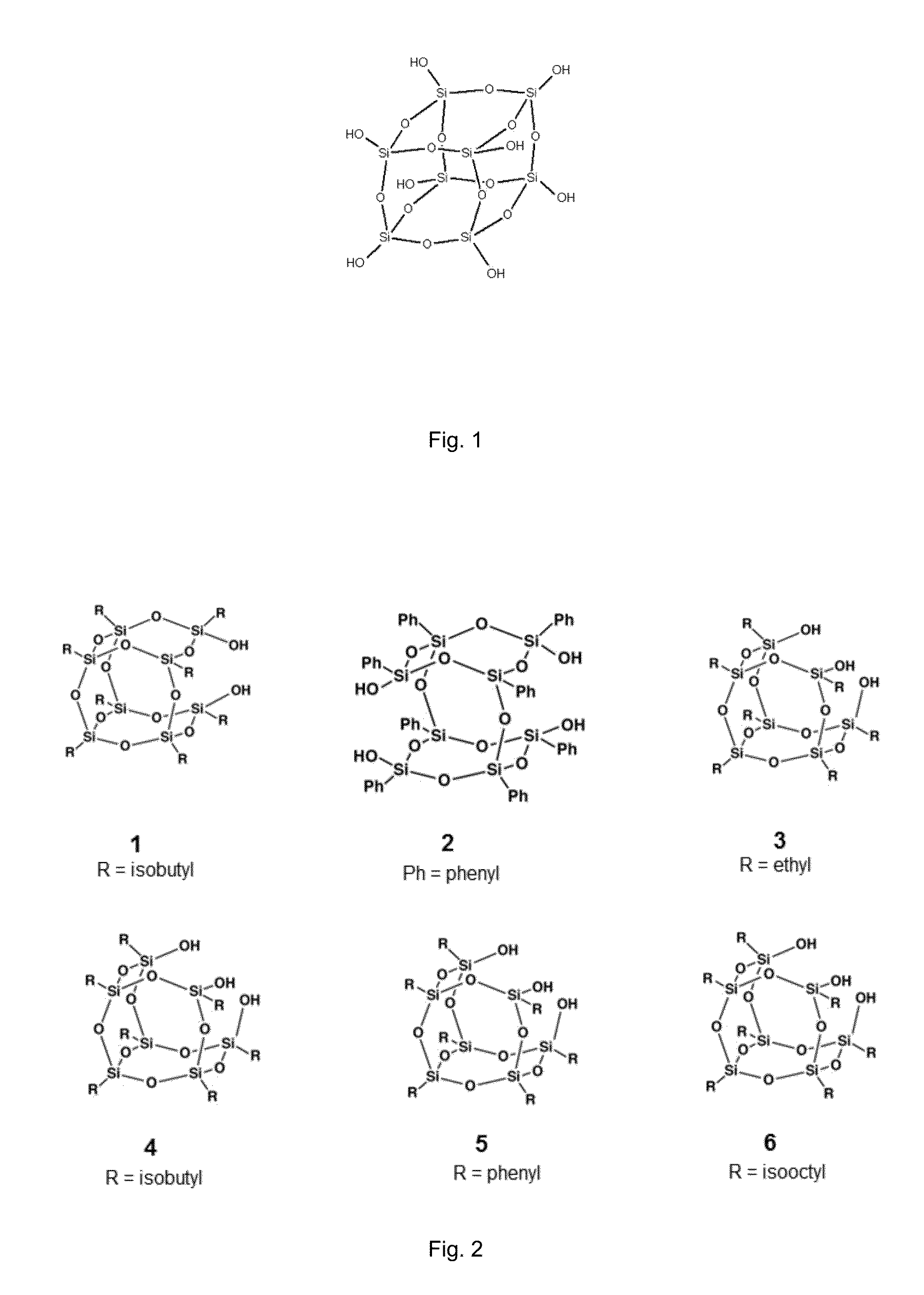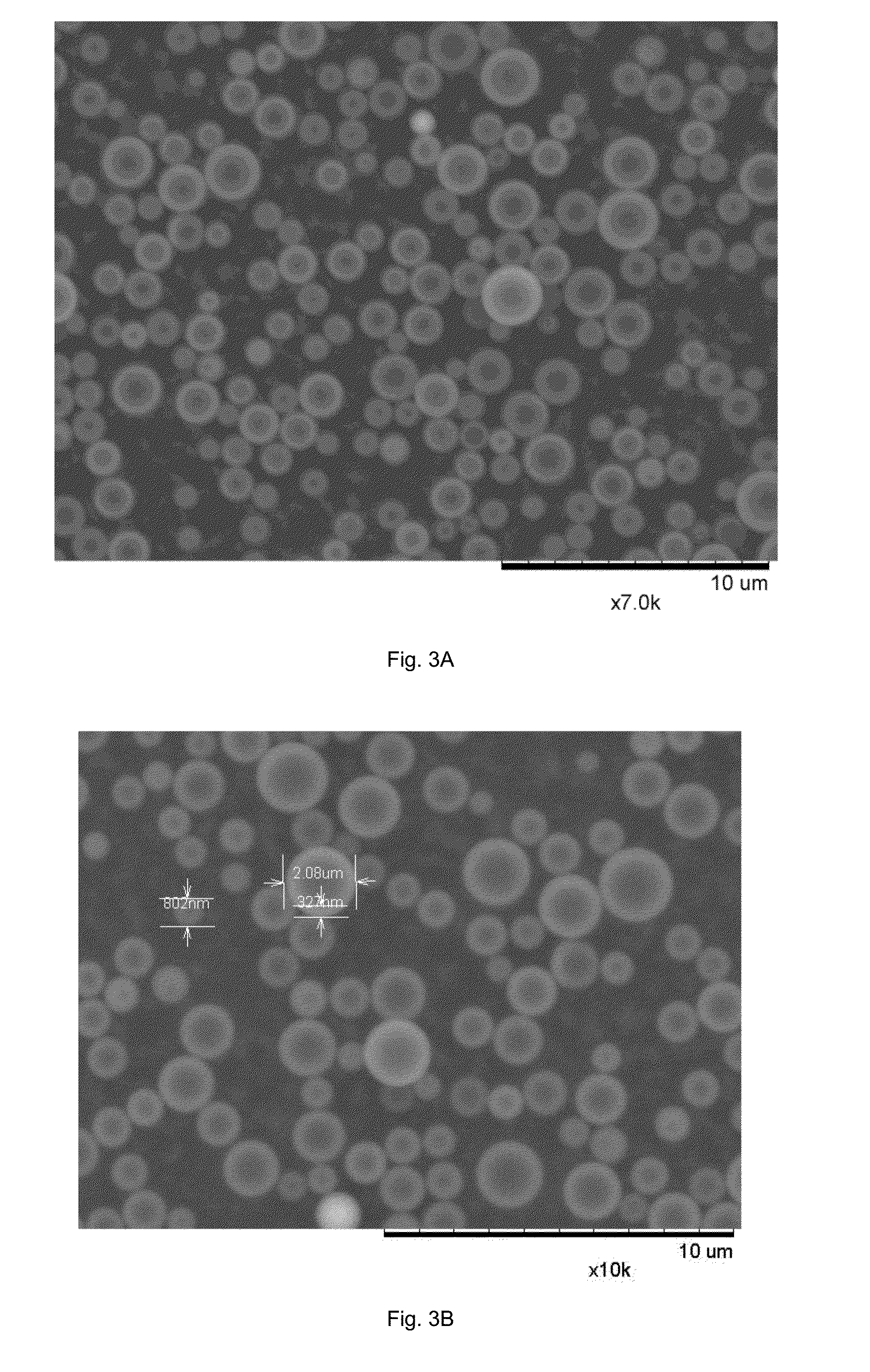Chromatographic material and methods for the synthesis thereof
a technology of chromatographic material and synthesis method, which is applied in the field of chromatographic sample separation, can solve the problems of irreversible retention of solutes on the stationary phase, relatively low sample capacity of the bed of non-porous particles, etc., and achieve excellent ph resistance, improved thermal stability, and high mechanical robustness
- Summary
- Abstract
- Description
- Claims
- Application Information
AI Technical Summary
Benefits of technology
Problems solved by technology
Method used
Image
Examples
example 1
[0093]The reaction followed the general procedure described above but with a slight variation. The TEOS and POSS were dissolved in ethanol prior to addition to the hydrolysis solution. For this, a volume of ethanol equal to four times the volume of the combined precursors was used (i.e. 3.56 ml TEOS and 0.44 ml POSS (4 ml total) were dissolved in 16 ml of ethanol), which was taken from the total ethanol content (i.e. 384 ml instead of 400 ml of ethanol was mixed with 250 ml DI H2O to constitute the hydrolysis solution). The rationale behind this is that at least the TEOS diffusion into the hydrolysis solution is significantly aided by dilution prior to mixing under traditional Stöber conditions. Therefore, the decision was taken to dissolve the precursors prior to mixing.
example 2
[0094]In Example 2, the procedure of Example 1 was followed but the amounts of precursors were changed so that a 1:1 mixture was achieved. Therefore, Example 2′s composition was 2 ml TEOS and 2 ml POSS. Both Examples 1 and 2 produced spherical particles with a wider particle size distribution normally associated with silica particles obtained under modified Stöber conditions. Both Examples 1 and 2 produced silica with high %C composition after synthesis (see results below).
examples 3-6
[0095]Examples 3-6 were focused on improving the resultant particle size distribution. The experimental protocol reverted back to the general procedure first described above, i.e. in these cases no pre-dilution of the precursors was performed. The TEOS and POSS reagents were mixed together in a glass vial and subjected to ultrasonic mixing for 2 minutes. After which the mixed precursors solution was added to the reaction flask. These Examples produced particles with a very narrow particle size distribution and mean particle diameter of ˜1.5 μm. Without being bound by any theory, it is believed that the alkyl, in these examples isooctyl, chains in the POSS compound, when added to the reaction mixture, help to stabilise the reaction medium, thereby allowing a stable emulsion to be formed and preventing serious particle aggregation. The %carbon composition was consistent with the results obtained from Example 1.
PUM
| Property | Measurement | Unit |
|---|---|---|
| median particle diameter | aaaaa | aaaaa |
| median particle diameter | aaaaa | aaaaa |
| BET specific surface area | aaaaa | aaaaa |
Abstract
Description
Claims
Application Information
 Login to View More
Login to View More - R&D
- Intellectual Property
- Life Sciences
- Materials
- Tech Scout
- Unparalleled Data Quality
- Higher Quality Content
- 60% Fewer Hallucinations
Browse by: Latest US Patents, China's latest patents, Technical Efficacy Thesaurus, Application Domain, Technology Topic, Popular Technical Reports.
© 2025 PatSnap. All rights reserved.Legal|Privacy policy|Modern Slavery Act Transparency Statement|Sitemap|About US| Contact US: help@patsnap.com



